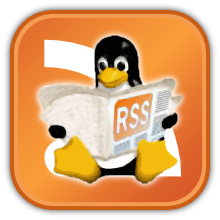 4Pane is a multi-pane, detailed-list file manager for Linux. It is designed to be fully-featured without bloat, and aims for speed rather than visual effects. In addition to standard file manager things, it offers multiple undo and redo of most operations (including deletions), archive management including 'virtual browsing' inside archives, multiple renaming/duplication of files, a terminal emulator and user-defined tools.
4Pane is a multi-pane, detailed-list file manager for Linux. It is designed to be fully-featured without bloat, and aims for speed rather than visual effects. In addition to standard file manager things, it offers multiple undo and redo of most operations (including deletions), archive management including 'virtual browsing' inside archives, multiple renaming/duplication of files, a terminal emulator and user-defined tools.There are three ways to acquire 4Pane:
- Download and install a binary package. See below.
- If there isn't a package available for your distro, or you prefer not to use it, you can download the source tarball from SourceForge, then follow the instructions in Installing.
- You can get the very latest changes and fixes from git. To 'download' 4Pane into a dir called ~/filemanagers: Install git if it's not already present.
Open a terminal, cd to ~/filemanagers/, and do:
git clone git://fourpane.git.sourceforge.net/gitroot/fourpane/4Pane
A new dir called ~/filemanagers/4Pane will have been created. Now follow the instructions in Installing.
Please note that the old subversion repository still exists, but in the future it will be updated less often (if at all).
- Download and install a binary package. See below.
- If there isn't a package available for your distro, or you prefer not to use it, you can download the source tarball from SourceForge, then follow the instructions in Installing.
- You can get the very latest changes and fixes from git. To 'download' 4Pane into a dir called ~/filemanagers: Install git if it's not already present.
Open a terminal, cd to ~/filemanagers/, and do:
git clone git://fourpane.git.sourceforge.net/gitroot/fourpane/4Pane
A new dir called ~/filemanagers/4Pane will have been created. Now follow the instructions in Installing.
Please note that the old subversion repository still exists, but in the future it will be updated less often (if at all).
Repositories
If you use a debian-based distro (or PCLinuxOS), there are the following repositories:Available Versions
Repository
Debian
squeeze wheezy
http://www.4pane.co.uk/debian/
Ubuntu
oneiric precise
http://www.4pane.co.uk/ubuntu/
Mepis
squeeze
http://www.4pane.co.uk/mepis/
PCLinuxOS
2012.2
http://www.4pane.co.uk/pclinuxos/
The ubuntu packages will also work on kubuntu/xubuntu/lubuntu and on mint (the squeeze or wheezy packages should work on mint debian).
These repositories also provide debuginfo debs, should you need them; and they still contain some 0.5.1/0.6.0/0.7.0/0.8.0 builds for no-longer-supported versions of the distros. Alternatively this link lets you access the 0.5.1/0.6.0/0.7.0/0.8.0 pages.
You'll need to tell apt about the 4Pane public key by doing, as superuser:
apt-key adv --fetch-keys http://www.4pane.co.uk/4Pane.asc
You can either use synaptic or equivalent, or add the appropriate url to /etc/apt/sources.list by hand. (see here for details).
If you don't want to use a repository directly, you can instead download a .deb file (or for PCLinuxOS, an rpm) by clicking the appropriate link below, then install it with dpkg as described in Installing.
i386
x86_64
Debian
squeeze wheezy
Ubuntu
oneiric precise
Mepis
squeeze
PCLinuxOS
2012.2
For Knoppix 6.4.3 and later, use debian squeeze i386.
Again, should you be using an older version of these distros, there may be a 0.8.0 or earlier package available: this link lets you access the their pages.
Screenshots.
4Pane in Ubuntu
4Pane in Fedora
4Pane in Sabayon
4Pane with terminal emulator open, in Debian
Horizontal-split mode in Slackware
Unsplit mode in PCLinuxOS
Unsplit mode with stripes, Mepis
The 'Locate' dialog in openSUSE
The 'Multiple Rename' dialog on Mint
The Configure dialog, xubuntu with xfce, in a virtualbox guest
The QuickGrep dialog, on jwm in Puppy

Custom Search
If you liked this article, subscribe to the feed by clicking the image below to keep informed about new contents of the blog:







0 commenti:
Post a Comment